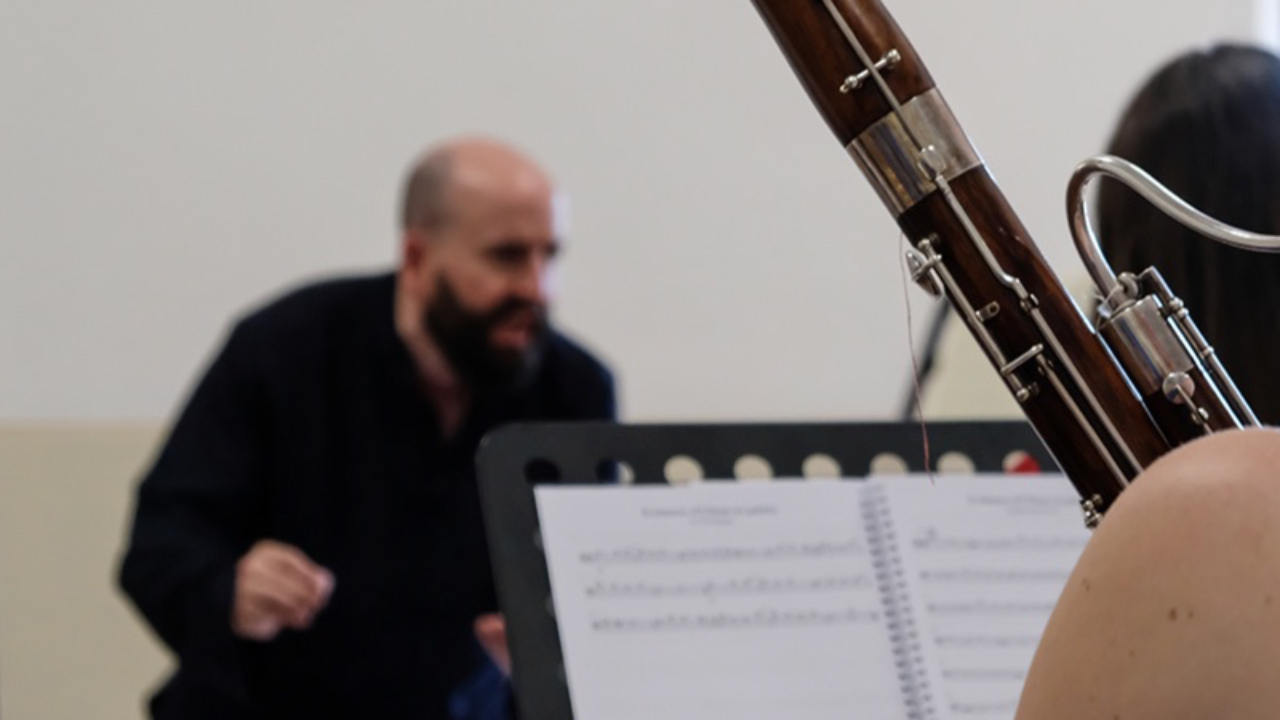
The importance of text for instrumentalists
While it’s the singer’s job to convey the words with great diction, the importance of text to instrumentalists can’t be underestimated. We chat to our Veneto Opera Summer School conductor Peter Ford and music coaches Julie Aherne and Bernard Tan to get their views.
Why is text so important for instrumentalists?
Peter: “As instrumentalists, we fundamentally imitate the gesture and nuance of the human voice. Clear and correct diction creates strong, characteristic articulation, and tenuto, staccato, and martellato each imitate the phonetic qualities of text. Effective use of portamento serves to recreate the connection and fluidity of a vocal line. For string players, as an example, the timbral qualities of the voice are reflected in techniques such as sul ponticello (nasal) or sul tasto (breathy). An awareness of all of this is vital to achieving stylistic unity in operatic performance.”
Julie: “Training for instrumentalists is very different from that of singers, and so it’s easy for operatic and symphonic repertoire to feel like totally separate worlds. Often, we are told not to apply for certain roles unless we have 'operatic experience’. The use of language is one of the key differences between vocal and instrumental art forms, and so a thorough understanding of how singers use text is essential.”
Bernard: “Most experienced orchestra players will know that playing for opera is very different from playing symphonic works or chamber music. The main reason being that in operas, the text and voice lead the music. Experience and ability in playing operatic repertoire is very important for instrumentalists, but it takes time to build a sensitivity to the voice and to learn to use this under an opera conductor. This is where text and an understanding of what to listen for comes in.”
How has a better understanding of text helped you as an instrumentalist/conductor?
Peter: “The pit can be a noisy place! We’ve all been told to listen to the singer, but what are we listening for? If instrumentalists possess an awareness of the workings of the text (not necessarily every single word) then the singer is more freely able to lead, and the orchestra to follow. Clear communication between stage and pit is a hallmark of all great operatic performances.”
Julie: “For me, understanding the role of the text was not just the missing link that helped me work with singers more effectively and holistically, but something that opened the door to new possibilities of expression and interpretation that wouldn’t have occurred to me before. I now look at the text first when approaching a new work. Not only is it a major component of the musical information contained within a score, but in many cases it was the composer’s starting point as well.”
Bernard: “A better understanding of text is fundamental for anyone studying and performing vocal music, regardless of whether you are singing, playing an instrument or conducting. The text makes us understand why the composer writes in a certain way and provides us clear dramatic guidelines as to why the music is what it is and how we should perform it. In my experience, most of the decisions I make in vocal music come from an understanding of the text. This allows me to not only be confident as a pianist and coach but also to fully appreciate how texts work with the accompaniment so that I can make well-informed decisions for the music I perform.”
How does the Melofonetica Method help instrumentalists working with Italian text?
Peter: “The Melofonetica Method’s focus on achieving clear diction as the foundation of musical and dramatic expression shines a light on the hidden rhythms of the text itself. I have found myself endlessly fascinated by what the method reveals of how the poetry of the language informs the musical line, providing both cause and control for rubato and musical gesture.”
Julie: “The method helps instrumentalists understand the links, both historical and practical, between text, rhythm, and articulation of sung Italian. It enables them to understand how singers use text to create and enhance expression, including the use of portamenti, how singers might use text to control and dictate rubato (‘why do they take so long there?!’) and how this is all transferable to instrumental playing. They method also helps instrumentalists develop their awareness of what to listen for to aid good ensemble between pit and stage.”
Bernard: “The method is a very systematic way for anyone to understand how Italian text works in music. Instrumentalists benefit by gaining a much better understanding of the structure of sung Italian, and the close connection between the music and the idiomatic sounds of the language, as used by singers at the highest levels in the industry. Ultimately, the method helps instrumentalists build a better sensitivity to the text and know what to listen for when they perform.”
Find out more
You can find out much more about the structure of sung Italian text in the Melofonetica Method book.
For any queries, or to enquire about coaching for accompanists or conductors, feel free to get in touch here!

